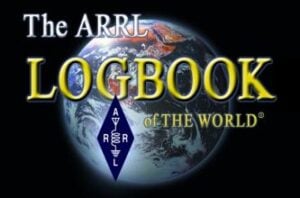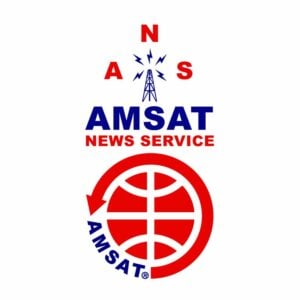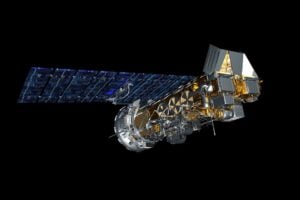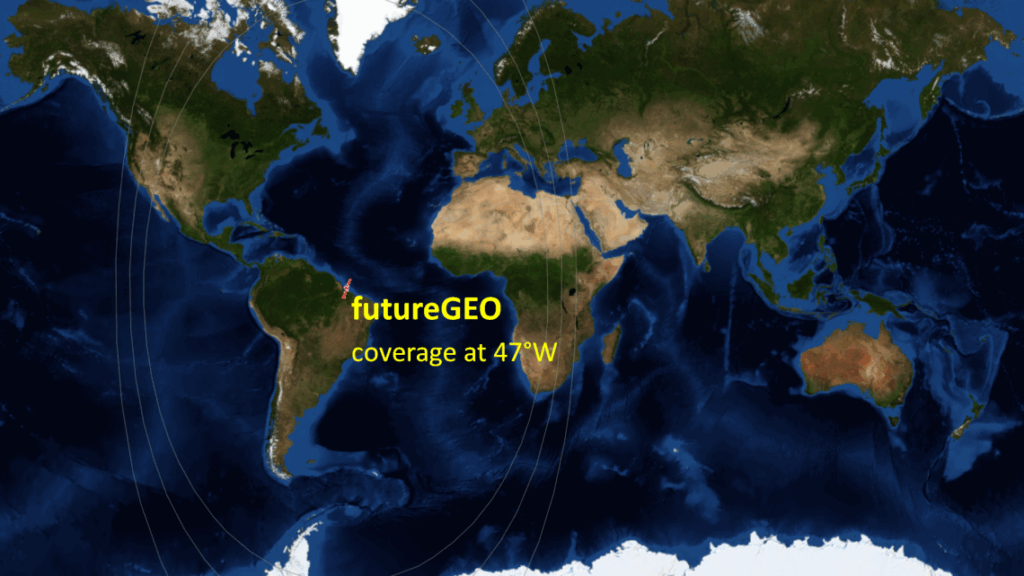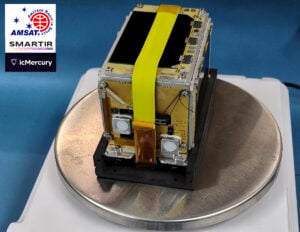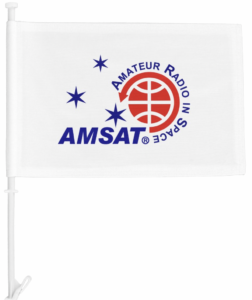July 6, 2025
In this edition:
* AMSAT Field Day Submissions Now Due
* Seeking Additional Volunteers for Moon Day at Dallas Frontiers of Flight Museum
* GridMasterMap Satellite Top 100 Rovers July 2025 Rankings
* VUCC Satellite Standing July 2025
* DXCC Satellite Standing July 2025
* Changes to AMSAT-NA TLE Distribution
* French Astronaut Will Take Food From Michelin-Starred Chef to ISS
* ARISS News
* AMSAT Ambassador Activities
* Satellite Shorts From All Over
The AMSAT News Service bulletins are a free, weekly news and information service of AMSAT, the Radio Amateur Satellite Corporation. ANS publishes news related to Amateur Radio in Space including reports on the activities of a worldwide group of Amateur Radio operators who share an active interest in designing, building, launching and communicating through analog and digital Amateur Radio satellites.
The news feed on http://www.amsat.org publishes news of Amateur Radio in Space as soon as our volunteers can post it.
Please send any amateur satellite news or reports to: ans-editor [at] amsat.org
Sign up for free e-mail delivery of the AMSAT News Service Bulletins via the ANS List; to join this list see: https://mailman.amsat.org/postorius/lists/ans.amsat.org/
AMSAT Field Day Submissions Now Due
Now that Field Day is over, there is one more thing you can do if you would like to participate in the scoring process for AMSAT Field Day. Email your submission sheet.
If you do not have the submission sheet, go to AMSAT.org and under EVENTS, select AMSAT Field Day. Download the rules. The Satellite Summary Sheet is at the end of the rules.
The Satellite Summary Sheet should be used for submission of the AMSAT Field Day competition and be received by KK5DO (e-mail) by 11:59 P.M. CDT, Tuesday, July 29, 2025. This year, we are using the same due date as the ARRL. The only method for submitting your log is via e-mail to kk5do [at] amsatnet.com or kk5do [at] arrl.net. No mail-in entries.
Add photographs or other interesting information that can be used in an article for The AMSAT Journal.
You will receive an e-mail back (within one or two days) your e-mail submission has been received. If you do not receive a confirmation message, then try sending it again or send it to the other e-mail address.
[ANS thanks Bruce Paige, KK5DO, AMSAT Director Contests and Awards, for the above information]
Your 2025 AMSAT President’s Club Coin Is Waiting!
Celebrating the 40th Anniversary of Amateur Radio on Human Spaceflight
Help Support GOLF and Fox Plus.
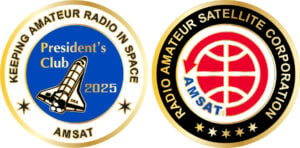
Join the AMSAT President’s Club today and help
Keep Amateur Radio in Space!
https://www.amsat.org/join-the-amsat-presidents-club/
Seeking Additional Volunteers for Moon Day at Dallas Frontiers of Flight Museum
The 2025 Moon Day, a space-themed public STEM event, will take place on Saturday, July 19 at the Frontiers of Flight Museum at Love Field in Dallas. Held each year close to the date of the Apollo 11 moon landing, the event features hands-on science exhibits and activities for all ages. Moon Day runs from 10:00 a.m. to 4:00 p.m. CDT, with setup beginning at 8:00 a.m. CDT.
AMSAT will once again be represented at the event by AMSAT Ambassador Thomas Schuessler, N5HYP, along with several North Texas satellite enthusiasts. They will engage with the public — including many young people — on topics such as satellite orbits, the International Space Station, and amateur radio in space. Exhibits will include the AMSAT Fox CubeSat engineering model and the CubeSat Simulator, and the team hopes to demonstrate a few live satellite passes during the day.
Tom is seeking additional AMSAT volunteers from the North Texas area to help staff the exhibit table. The AMSAT booth will be located next to the Dallas Amateur Radio Club exhibit, providing opportunities for great conversations with fellow hams as well as curious families. Volunteers receive free museum admission and lunch. Anyone interested in helping for part or the entire day is encouraged to email Tom at n5hyp [at] arrl [dot] net.

Col. Carl E. Walz (USAF, Ret.) ex-KC5TIE and former NASA Astronaut will be the keynote speaker for Moon Day 2025 (Photo credit: NASA)
More information about the event is available at: https://flightmuseum.com/events/moonday
[ANS thanks Tom Schuessler, N5HYP, AMSAT Ambassador, for the above information]
Need new satellite antennas?
 Purchase M2 LEO-Packs from the AMSAT Store.
Purchase M2 LEO-Packs from the AMSAT Store.
When you purchase through AMSAT, a portion of the proceeds goes towards
Keeping Amateur Radio in Space.
https://amsat.org/product-category/hardware/
GridMasterMap Satellite Top 100 Rovers July 2025 Rankings
The July 2025 rankings for the Top 100 Rovers (Mixed LEO/MEO/GEO) in satellite operations, as determined by @GridMasterMap on Twitter, has been released. The ranking is determined by the number of grids and DXCC entities activated, taking into account only those grids where a minimum number of QSOs logged on the gridmaster.fr website have been validated by a third party. Grid numbers do not directly reflect the exact number of activations. Satellite operators are encouraged to upload their LoTW satellite contacts to https://gridmaster.fr in order to provide more accurate data.
Updated: 2025-06-28
| 1 | ND9M | 26 | KX9X | 51 | K7TAB | 76 | HB9GWJ | |||
| 2 | NJ7H | 27 | DJ8MS | 52 | PR8KW | 77 | N4UFO | |||
| 3 | JA9KRO | 28 | KG5CCI | 53 | XE1ET | 78 | PT2AP | |||
| 4 | UT1FG | 29 | ON4AUC | 54 | W7WGC | 79 | AA8CH | |||
| 5 | N5UC | 30 | N5BO | 55 | EB1AO | 80 | VE1VOX | |||
| 6 | DL6AP | 31 | K8BL | 56 | DF2ET | 81 | PT9BM | |||
| 7 | OE3SEU | 32 | KE4AL | 57 | N6DNM | 82 | FG8OJ | |||
| 8 | DP0POL | 33 | KB5FHK | 58 | EA4NF | 83 | YU0W | |||
| 9 | F5VMJ | 34 | PA3GAN | 59 | LU4JVE | 84 | N6UTC | |||
| 10 | WI7P | 35 | JO2ASQ | 60 | SM3NRY | 85 | AF5CC | |||
| 11 | K5ZM | 36 | F4BKV | 61 | KI7QEK | 86 | KI7UXT | |||
| 12 | LU5ILA | 37 | VE3HLS | 62 | AA5PK | 87 | JM1CAX | |||
| 13 | N6UA | 38 | KI0KB | 63 | W1AW | 88 | KJ7NDY | |||
| 14 | W5PFG | 39 | VA3VGR | 64 | F4DXV | 89 | PS8BR | |||
| 15 | N9IP | 40 | KI7UNJ | 65 | DL4EA | 90 | N4DCW | |||
| 16 | WY7AA | 41 | HJ5LVR | 66 | KE9AJ | 91 | WA9JBQ | |||
| 17 | HA3FOK | 42 | LA9XGA | 67 | AD7DB | 92 | KG4AKV | |||
| 18 | AK8CW | 43 | N7AGF | 68 | VE1CWJ | 93 | W8MTB | |||
| 19 | DL2GRC | 44 | VK5DG | 69 | BG7QIW | 94 | KB2YSI | |||
| 20 | AD0DX | 45 | JL3RNZ | 70 | W8LR | 95 | K0FFY | |||
| 21 | N4AKV | 46 | XE3DX | 71 | SP5XSD | 96 | VE3GOP | |||
| 22 | BA1PK | 47 | KE0WPA | 72 | M1DDD | 97 | N0TEL | |||
| 23 | AD0HJ | 48 | AC0RA | 73 | N8RO | 98 | DK9JC | |||
| 24 | WD9EWK | 49 | KE0PBR | 74 | VA7LM | 99 | K6VHF | |||
| 25 | ND0C | 50 | JK2XXK | 75 | KM4LAO | 100 | VE7PTN |
[ANS thanks @GridMasterMap for the above information]
VUCC Satellite Standing July 2025
VUCC Satellite Award/Endorsement Change Summary for June 01, 2025 to July 01, 2025.
| KO4MA | 2000 | 2100 |
| DL5GAC | 1576 | 1745 |
| DF2ET | 1602 | 1700 |
| W5CBF | 1326 | 1554 |
| AA5PK | 1524 | 1525 |
| K8TL | 1016 | 1017 |
| 4J6D | 150 | 1000 |
| W8LR | 905 | 910 |
| VE7PTN | 635 | 794 |
| N8MR | 775 | 783 |
| W6ZQ | 560 | 561 |
| JG2TSL | 157 | 516 |
| K6VHF | 376 | 401 |
| N8HRZ | 337 | 343 |
| JE2UFF | 280 | 334 |
| SP7JS | 253 | 300 |
| YL2KF | New | 283 |
| EA4DEI | 150 | 200 |
| OH3DP | 150 | 176 |
| NK0S | 169 | 170 |
| N9BX | 125 | 163 |
| KC7WXD | New | 133 |
| XE2YWH(DL82-DL92) | New | 119 |
| WB5TX | 101 | 110 |
| KB4YKC | 100 | 108 |
| K4XP | 101 | 102 |
| BI1OEU | New | 100 |
| EA1FWI | New | 100 |
Congratulations to the new VUCC Satellite holders!
YL2KF is first VUCC Satellite holder from Latvia and KO27
EA1FWI is first VUCC Satellite holder from IN72
[ANS thanks Jon Goering, N7AZ, for the above information]
DXCC Satellite Standing July 2025
DXCC Satellite Award/Endorsement Change Summary for June 01, 2025 to July 01, 2025.
| IW1FZR | 154 | 184 |
| YO2CMI | 180 | 184 |
| HB9RYZ | 163 | 164 |
| EA2AA | 160 | 161 |
| IK4DRY | 144 | 150 |
| W5CBF | 130 | 143 |
| DL2MIH | 132 | 141 |
| EA1N | 114 | 139 |
| DL2QB | 120 | 136 |
| IK0WMJ | 128 | 131 |
| IK7FMQ | 128 | 130 |
| LA0FA | 117 | 128 |
| W8LR | 112 | 114 |
| I4DOR | New | 101 |
| KP3V | New | 100 |
KP3V is first DXCC Satellite holder from FK78
[ANS thanks Jon Goering, N7AZ, for the above information]
Want to fly the colors on your own grid expedition?
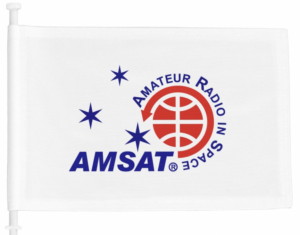
Get your AMSAT car flag and other neat stuff from our Zazzle store!
25% of the purchase price of each product goes towards
Keeping Amateur Radio in Space
https://www.zazzle.com/amsat_gear
Changes to AMSAT-NA TLE Distribution for July 4
Two Line Elements or TLEs, often referred to as Keplerian elements or keps in the amateur community, are the inputs to the SGP4 standard mathematical model of spacecraft orbits used by most amateur tracking programs. Weekly updates are completely adequate for most amateur satellites. TLE bulletin files are updated daily in the first hour of the UTC day. New bulletin files will be posted immediately after reliable elements become available for new amateur satellites. More information may be found at https://www.amsat.org/keplerian-elements-resources/.
This week there are no additions or deletions to the AMSAT TLE distribution.
[ANS thanks Joe Fitzgerald, KM1P, AMSAT Orbital Elements Manager for the above information]
French Astronaut Will Take Food From Michelin-Starred Chef to ISS
French cuisine has a reputation for being among the world’s best. So what’s a French astronaut do to when faced with the prospect of spending months aboard the International Space Station eating freeze-dried food straight from the packaging?
Recruit a Michelin-starred chef to reimagine French classics like foie gras and lobster bisque was the answer for Sophie Adenot, KJ5LTN, who is due to undertake her first space mission in 2026.
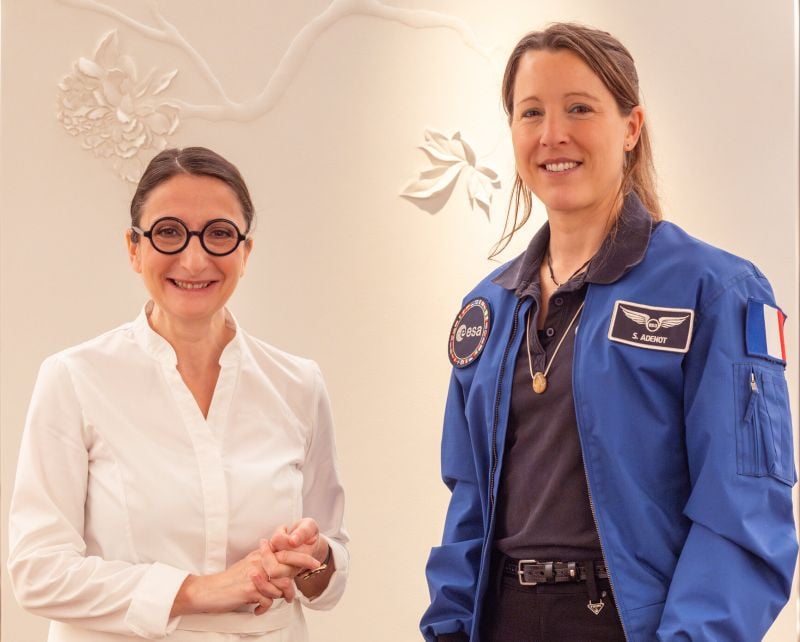
Chef Anne-Sophie Pic and astronaut Sophie Adenot, KJ5LTN, at a tasting in Paris. (Photo: Groupe Pic and ESA)
The meals designed by Anne-Sophie Pic will make up the “bonus food” taken to the ISS during Adenot’s εpsilon mission, the European Space Agency said in a statement Tuesday, July 1.
Food in space is typically freeze-dried and comes in plastic packaging from a list of preapproved items, the ESA said. Fruit and vegetables are a rare luxury that are available only when a spacecraft arrives with supplies.
Astronauts, however, are able to have specially catered “bonus food” that makes up about 10 percent of what they eat. This is usually developed in partnership with a chef, and astronauts say it boosts mental well-being, adds variety and helps them bond with fellow crew members when shared in orbit, according to the ESA.
See the full article at https://wapo.st/4lyxEKj
[ANS thanks The Washington Post for the above information.]
ARISS NEWS
Amateurs and others around the world may listen in on contacts between amateurs operating in schools and allowing students to interact with astronauts and cosmonauts aboard the International Space Station. The downlink frequency on which to listen is 145.800 MHz worldwide.

RECENTLY COMPLETED
Axiom 4 group 1 telebridge via K6DUE
Hungarian Scout Association, Budapest, Hungary
Debrecen – Bánki Reformed Primary School, Technical College and Vocational Training School, Debrecen, Hungary
Mezőberényi Petőfi Sándor Evangélikus Gimnázium, Kollégium és Általános Iskola, Mezöberény, Hungary
Budapesti Műszaki Szakképzési Centrum Puskás Tivadar Távközlési és Informatikai Technikum, Puskás Radio Amateur Club – HA5KHC, HA5KBF, Budapest, Hungary
The ISS callsign was scheduled to be NA1SS
The crewmember was Tibor Kapu, HA5TRO
The ARISS mentor is ON6TI
Contact was successful: Thu 2025-07-03 11:05:59 UTC 50 degrees elevation
Axiom 4 group 4 telebridge via K6DUE
University of Wrocław, Wrocław, Poland
The ISS callsign was scheduled to be NA1SS
The crewmember was Sławosz Uznański-Wiśniewski, SQ7AS
The ARISS mentor is K4RGK
Contact was successful: Fri 2025-07-04 08:41:36 UTC 16 degrees elevation
Congratulations to the Axiom 4 group 4 school, Sławosz, mentor K4RGK, and telebridge station K6DUE!
Congratulations to Sławosz for his first ever ARISS contact!
Watch for Livestream at https://www.youtube.com/watch?
Axiom 4 group 5 telebridge via K6DUE
UR Rao Satellite Centre (URSC), Dept. of Space, Govt. of India, Bengaluru, Karnataka, India
The ISS callsign was scheduled to be NA1SS
The crewmember was Shubhanshu Shukla, VU2TNI
The ARISS mentor is AA6TB
Contact was successful: Fri 2025-07-04 10:17:10 UTC 86 degrees elevation
Congratulations to the Axiom 4 group 5 students, Shubhanshu, mentor AA6TB, and telebridge station K6DUE!
Congratulations to Shubhanshu for his first ever ARISS contact!
Axiom 4 group 3 telebridge via K6DUE
Rzeszow University of Technology, Rzeszow Poland
The ISS callsign was scheduled to be NA1SS
The crewmember was Sławosz Uznański-Wiśniewski, SQ7AS
The ARISS mentor is K4RGK
Contact was successful: Sat 2025-07-05 09:28:23 UTC 48 degrees elevation
Congratulations to the Axiom 4 group 3 students, Sławosz, mentor K4RGK, and telebridge station K6DUE!
Watch for Livestream at https://www.youtube.com/watch?v=i1I8YF1mGJc
UPCOMING
Axiom 4 group 6 telebridge via K6DUE
North Eastern Space Applications Centre (NESAC), Dept. of Space, Govt. of India, Shillong, Meghalaya, India
The ISS callsign is presently scheduled to be NA1SS
The scheduled crewmember is Shubhanshu Shukla, VU2TNI
The ARISS mentor is AA6TB
Contact is go for: Tue 2025-07-08 08:38:31 UTC 77 degrees elevation
Axiom 4 group 2 telebridge via K6DUE
MOBILIS Közhasznú Nonprofit Kft., Győr, Hungary
The ISS callsign is presently scheduled to be NA1SS
The scheduled crewmember is Tibor Kapu, HA5TRO
The ARISS mentor is ON6TI
Contact is go for: Wed 2025-07-09 07:49:40 UTC 43 degrees elevation
The crossband repeater continues to be active [except for Progress Ops July 5 & 6](145.990 MHz up {PL 67} & 437.800 MHz down). If any crewmember is so inclined, all they have to do is pick up the microphone, raise the volume up, and talk on the crossband repeater. So give a listen, you just never know.
The packet system is also active [except for Progress Ops July 5 & 6](145.825 MHz up & down).
As always, if there is an EVA, a docking, or an undocking; the ARISS radios are turned off as part of the safety protocol. Powering off for Progress Ops on 7/5 OFF 15:50 UTC; ON 7/6 10:05 UTC.
Note, all times are approximate. It is recommended that you do your own orbital prediction or start listening about 10 minutes before the listed time.
The latest information on the operation mode can be found at https://www.ariss.org/current-status-of-iss-stations.html
The latest list of frequencies in use can be found at https://www.ariss.org/contact-the-iss.html
[ANS thanks Charlie Sufana, AJ9N, one of the ARISS operation team mentors for the above information]
AMSAT Ambassador Activities
AMSAT Ambassadors provide presentations, demonstrate communicating through amateur satellites, and host information tables at club meetings, hamfests, conventions, maker faires, and other events.
August 21-24, 2025
Northeast HamXposition (HamX) & New England ARRL Convention
Best Western Royal Plaza & Trade Center
181 Boston Post Road W
Marlborough, MA 01752
http://www.HamX.org
W1EME, WD4ASW, WB1FJ
September 6, 2025
Greater Louisville Hamfest
Paroquet Springs Conference Centre
395 Paroquet Springs Drive
Shepherdsville, KY 40165
W4FCL
October 16, 17, 18, 19, 2025
AMSAT Board of Directors Meeting and 43rd Annual AMSAT Space Symposium & Annual General Meeting
Holiday Inn & Suites Phoenix Airport North
1515 North 44th Street
Phoenix, Arizona 85008
Details at https://www.amsat.org/2025-symposium/
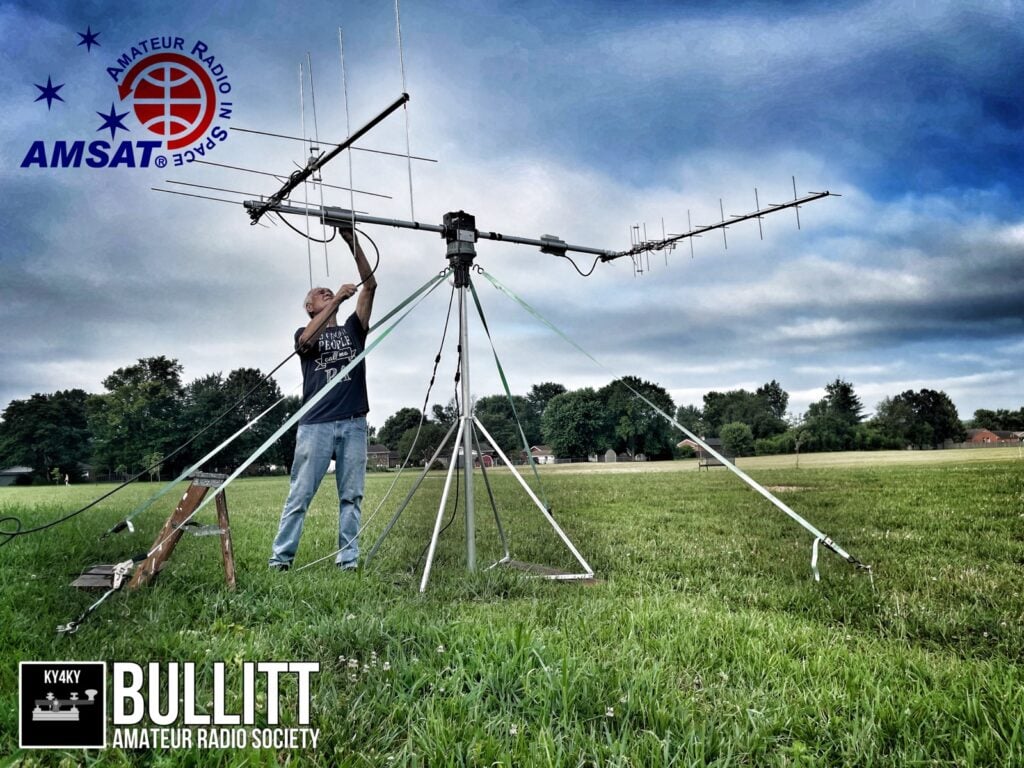
W4FCL is with WA4VOC at BARS Field Day (KC3WNX photo)
Interested in becoming an AMSAT Ambassador? AMSAT Ambassadors provide presentations, demonstrate communicating through amateur satellites, and host information tables at club meetings, hamfests, conventions, maker faires, and other events. For more information go to: https://www.amsat.org/ambassador/
[ANS thanks Bo Lowrey, W4FCL, Director – AMSAT Ambassador Program, for the above information]
Satellite Shorts From All Over
+ ARRL’s Logbook of the World (LoTW) was returned to service at 1400z on Wednesday, July 2, with upgraded servers. LoTW is a web-accessed database and repository that enables radio amateurs to submit electronic logs for amateur radio contacts (QSOs) and for confirmation (QSLs). Users can view submitted QSOs and resulting QSLs online. Radio amateurs can use LoTW to track their progress toward achievements and awards, such as Worked All States, DXCC, VUCC. It is also used to verify AMSAT awards such as Gridmaster. It is used by the vast majority of satellite operators. ARRL is soliciting donations through the ARRL website to support the maintenance and expansion of LoTW. (ANS thanks ARRL for the above information.)
+ AMSAT South Africa (AMSAT SA) has announced that the 2025 Space Symposium will be held on Saturday 2 August 2025 from 08:00 UTC – 14:00 UTC and has issued a call for papers. The theme of the symposium is “Embracing 68 years of space science and innovation in Amateur Radio.” Papers are invited covering all aspects of space science and communication impacting and enhancing the Amateur Radio experience, from the technical to operational aspects. Presentations are typically 30 minutes a with a 10-minute Q&A. Send proposals in MS Word to admin [at] amsatsa.org.za by 7 July 2025. To enable as widest as possible audience to participate, this symposium will be held online on the Webex platform. Members of all AMSAT organisations and national societies may attend free upon registration, which open on 9 July 2025. Email admin [at] amsatsa.org.za for details. (ANS thanks AMSAT SA for the above information.)
+ SpaceX launched its 500th Falcon 9 rocket to date with an overnight Starlink flight on Wednesday, July 2. The first stage booster used on the mission also flew for a record-setting 29th time. The mission, dubbed Starlink 10-25, lifted off from Space Launch Complex 40 at Cape Canaveral Space Force Station at 0628 UTC. A little more than eight minutes after liftoff, the booster landed on the droneship, ‘A Shortfall of Gravitas,’ completing the 472nd booster landing to date. (ANS thanks Spaceflight Now for the above information.)
+ MethaneSAT, the Environmental Defense Fund (EDF) methane-tracking satellite backed by the Bezos Earth Fund, is lost in space. Its ground team lost contact with the spacecraft on June 20 but tried to reestablish a connection until it learned in the morning of July 1 that MethaneSAT had lost power altogether. The team believes that the satellite is likely not recoverable. MethaneSAT collected data on methane emissions that have previously been untrackable in an effort to combat climate change. Methane is the second largest contributor to global warming after carbon dioxide, with agriculture, fossil fuels and waste decomposition being the largest sources. (ANS thanks Engadget for the above information.)
+ EUMETSAT’s Meteosat-12 satellite, formerly Meteosat Third Generation (MTG) Imager 1, has now taken over from Meteosat-10 to deliver Europe’s prime weather data service from GEO. Meteosat-12 is the first imaging satellite in the MTG program and now moves into its key position above the equator at 0° longitude, directly over the Gulf of Guinea. Meteosat-12 is now the main source of near-real-time geostationary satellite data for Europe, Africa and the surrounding oceans. (ANS thanks satnews for the above information.)
+ A newly discovered interstellar object is only the third such interloper to be observed in our solar system. The object — provisionally known as A11pl3Z — is not expected to pose an impact risk to Earth, but gained attention on Tuesday, July 1, when it was spotted by telescopes for NASA’s early warning system for asteroid impacts. Speeding through our solar system at about 245,000 kilometers per hour relative to the sun, it is currently located just inside the orbit of Jupiter, 528 million kilometers from Earth. It’s uncertain at this time if the object — which will get a new name when it is approved and published by the Minor Planet Center — is a comet or asteroid, but the observations so far have helped track the object’s journey, indicating it likely came from outside of the solar system from a thin galactic disk. (ANS thanks The Washington Post for the above information.)
Join AMSAT today at https://launch.amsat.org/
In addition to regular membership, AMSAT offers membership to:
* Societies (a recognized group, clubs or organization).
* Primary and secondary school students are eligible for membership at one-half the standard yearly rate.
* Post-secondary school students enrolled in at least half time status shall be eligible for the student rate for a maximum of 6 post-secondary years in this status.
* Memberships are available for annual and lifetime terms.
Contact info [at] amsat.org for additional membership information.
73 and remember to help Keep Amateur Radio in Space!
This week’s ANS Editor, Mark Johns, KØJM
mjohns [at] amsat.org
ANS is a service of AMSAT, the Radio Amateur Satellite Corporation, 712 H Street NE, Suite 1653, Washington, DC 20002

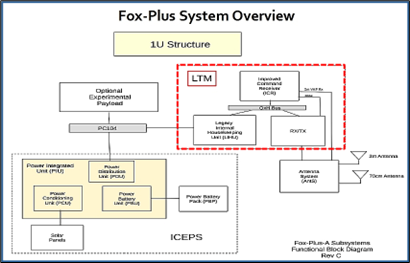
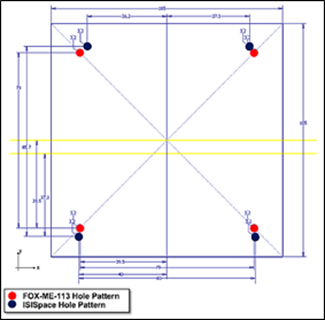

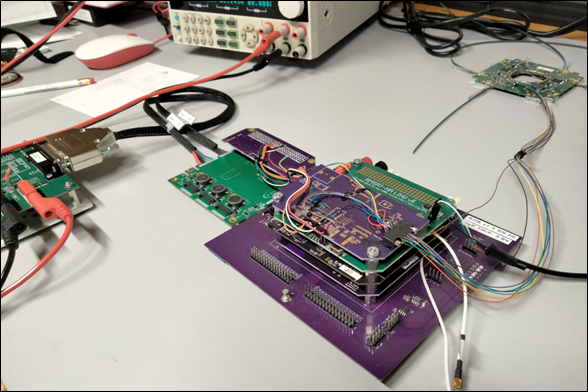
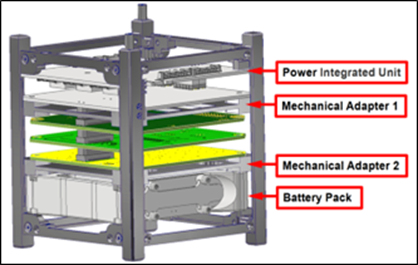
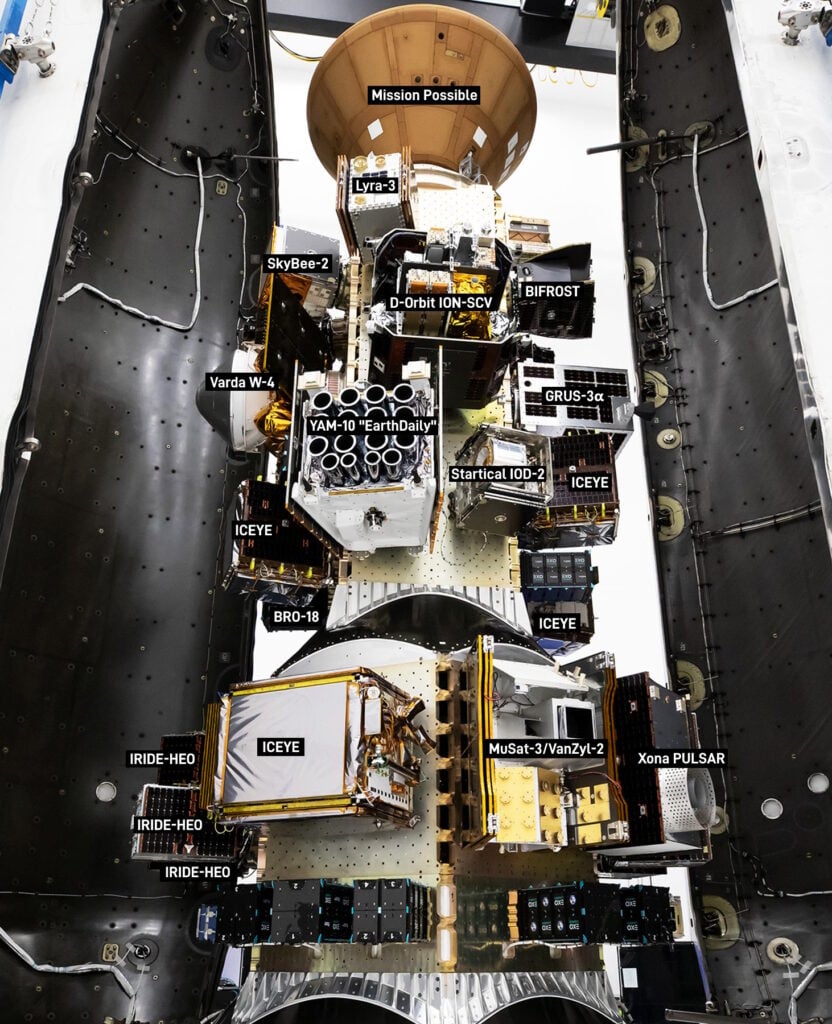
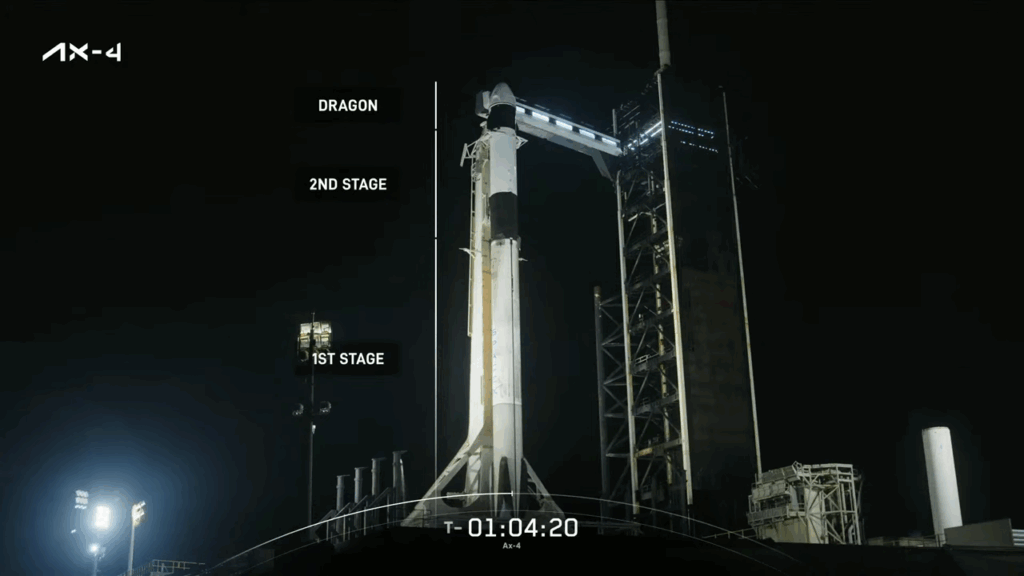
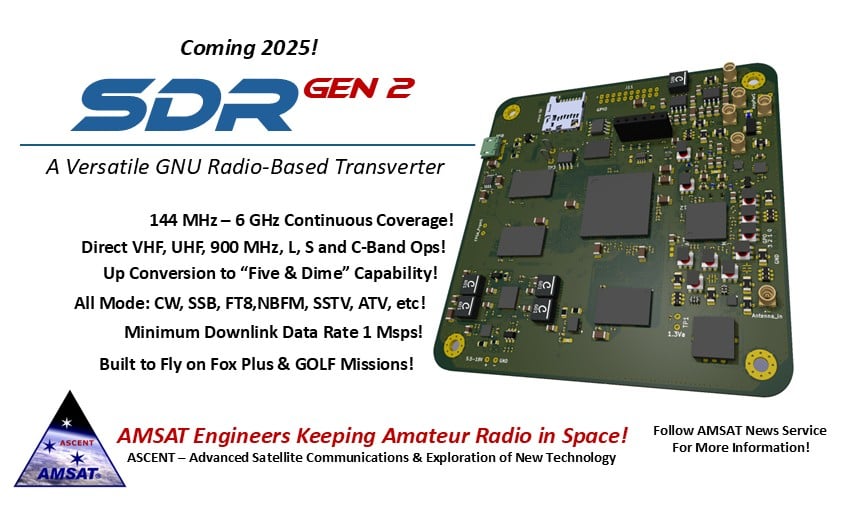

 (Photo Credit: JUPITER)
(Photo Credit: JUPITER)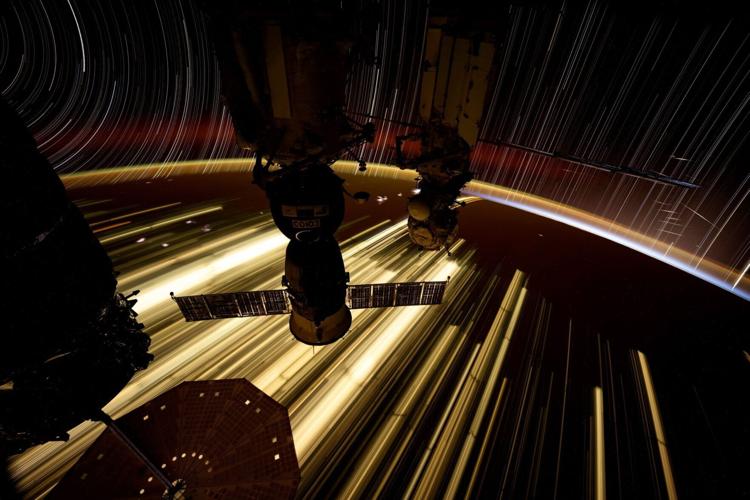 Starlink satellites are featured in this file photo (Dec. 2024) taken by NASA astronaut Don Pettit from the International Space Station (ISS). (Photo credit: Don Pettit/NASA via SWNS and Talker.com)
Starlink satellites are featured in this file photo (Dec. 2024) taken by NASA astronaut Don Pettit from the International Space Station (ISS). (Photo credit: Don Pettit/NASA via SWNS and Talker.com) 2025 ARRL Field Day logo (Credit: ARRL)
2025 ARRL Field Day logo (Credit: ARRL)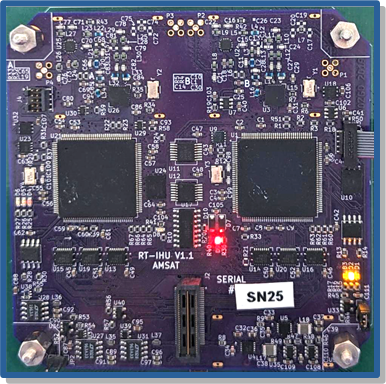
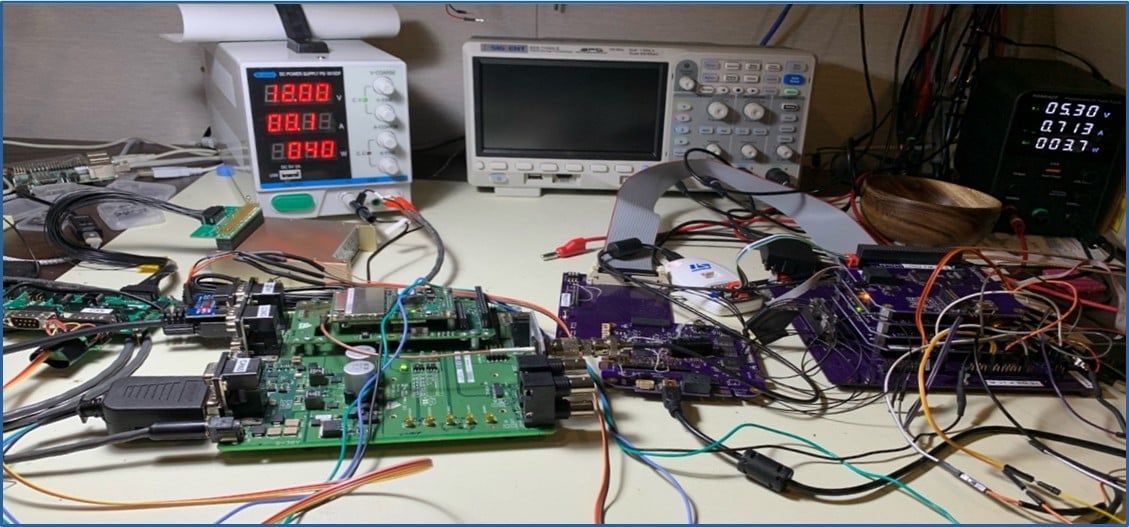
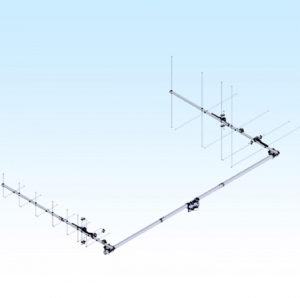 Purchase M2 LEO-Packs from the AMSAT Store.
Purchase M2 LEO-Packs from the AMSAT Store.